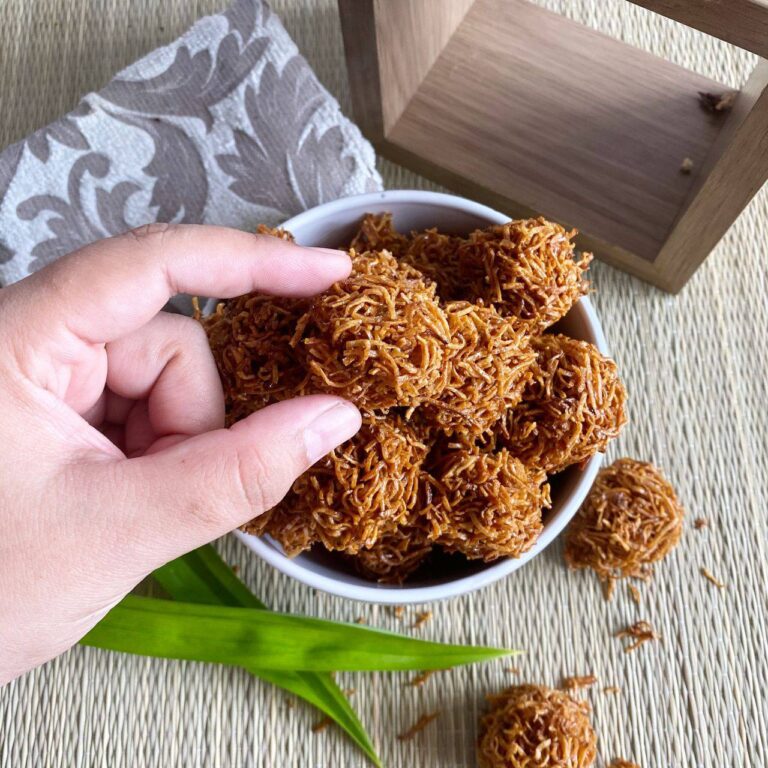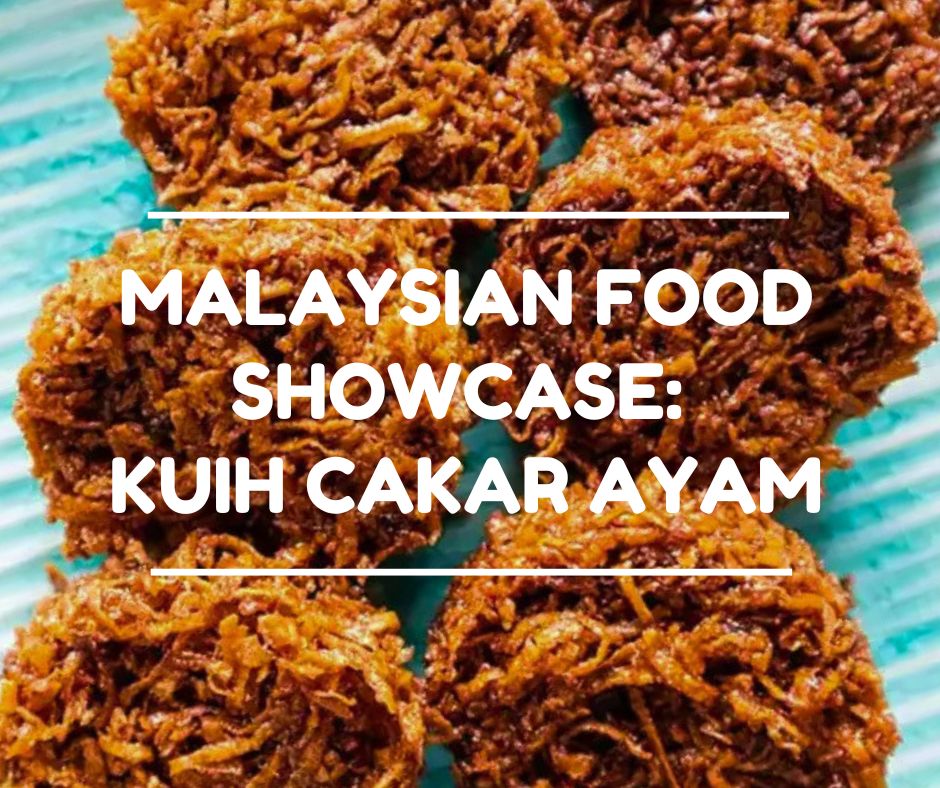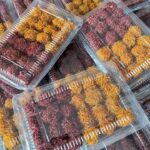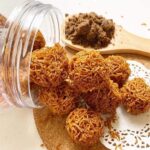Kuih Cakar Ayam: The Crunchy Claw-Like Snack from Malaysia
Kuih Cakar Ayam (or simply Cakar Ayam) is one of those quirky Malaysian traditional snacks whose name raises eyebrows but delivers nostalgic joy to many. Named after the jagged scratch marks a kampung chicken might leave in the dirt, this festive kuih resembles little tangled nests of crispy strands, often browned and glistening with caramelized sugar. It’s crunchy, sweet, and beautiful like a tangle of golden strings hardened into shape.
Kuih Cakar Ayam is beloved across Malaysia and considered a local specialty. It also plays a key role in Sarawak. Come Hari Raya, Chinese New Year, Hari Gawai, or any festive seasons really, you can find jars of it nestled among rows of homemade cookies, its distinctive nest-like shape standing out.
Making Kuih Cakar Ayam looks simple but it demands precision. At its heart, it uses only a few ingredients like sweet potatoes (or occasionally yam), sugar, and oil. The sweet potatoes are peeled and finely shredded into thread-thin strands. Traditionally, the grated strands are soaked in a kapur solution (alkaline lime water, not citrus lime water) to firm them up and add that signature snap. They’re then deep-fried in hot oil until golden and airy.
The magic happens with the sugar syrup. While white or brown sugar can be used, purists swear by Gula Melaka (palm sugar) for their burnt-caramel depth. The syrup must be heated until thick and glossy, but not scorched, so it clings to every strand without turning too sticky or soft. As soon as the fried strands are tossed in this syrup, they are quickly packed into circular moulds, about 3–4cm in diameter. Timing is everything. Too slow, and the mixture turns into a rock-solid lump. Too firm a press, and your kuih becomes tooth-breakingly hard.
From kampung households to pasar malam stalls, the crafting of Kuih Cakar Ayam is seen as a dying art. Now, modern producers are tempted to cut corners, replacing shredded sweet potato with rice noodles or skipping the kapur soak, resulting in kuih that lacks aroma and authenticity. Some even substitute white sugar for proper palm sugar syrup, leading to a kuih that looks the part but tastes flat. And then there’s the horror of frying in stale oil, one smell and you know it will give the wrong taste. For many though, it’s that unmistakable “krup krup” when you bite into a properly made piece that brings back memories.
Visually, it’s often mistaken for Kuih Karas, both are lacy, fried, and golden. But Kuih Cakar Ayam is darker, denser, and has a deeper, richer taste due to the syrup coating. And unlike kuih karas, which is made from rice flour batter swirled into hot oil, Cakar Ayam depends entirely on the natural starch of shredded root vegetables and the careful play of sugar and heat.
Today, you can find Kuih Cakar Ayam in selected kuih stalls or bakeries, especially during festive periods. Some homemade versions show up in Tupperware at office potlucks or school events. It’s a treat slowly disappearing from the mainstream, as fewer young people take up the craft and many opt for easier, modern bakes. So, if you ever chance upon a batch, especially one made with gula Melaka and hand-shredded sweet potato, make sure to show your support and grab it!





